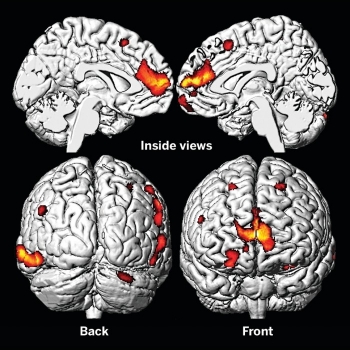 Chad Orzel thinks I need a new motto: “I’m not saying it was childhood lead exposure, but it was childhood lead exposure.” Guilty as charged! And in today’s installment of lead-related news, we have a new study from China—a bad region for being a child because they still have a lot of lead around, but a useful region for lead research for the exact same reason.
Chad Orzel thinks I need a new motto: “I’m not saying it was childhood lead exposure, but it was childhood lead exposure.” Guilty as charged! And in today’s installment of lead-related news, we have a new study from China—a bad region for being a child because they still have a lot of lead around, but a useful region for lead research for the exact same reason.
Thanks to this unfortunate circumstance, a team led by Jianghong Liu was able to set up a prospective study of more than a thousand preschool-age children in the Jiangsu province. “Prospective” means that they chose the children first, measured their blood lead levels, and then began charting their progress. This is generally considered a more reliable methodology than retrospective studies (which look at adults but try to figure out their childhood exposure via, say, tooth analysis) or ecological studies (which look for past correlations between lead and crime in an entire population). Here are the results of the first round of testing, done at age six (error ranges omitted for ease of reading):
General linear modeling showed significant associations between blood lead concentrations and increased scores for teacher-reported behavioral problems. A 1-µg/dL increase in the blood lead concentration resulted in a 0.322, 0.253, and 0.303 increase of teacher-reported behavior scores on emotional reactivity, anxiety problems, and pervasive developmental problems, respectively.
….Blood lead concentrations, even at a mean concentration of 6.4 µg/dL, were associated with increased risk of behavioral problems in Chinese preschool children, including internalizing and pervasive developmental problems. This association showed different patterns depending on age and sex.
It’s worth noting that a blood lead level of 6.4 is considered fairly moderate. If childhood lead exposure at this level causes noticeable behavioral problems, it’s a sign that even low levels of lead exposure can be quite dangerous. (Behavioral problems were assessed using questionnaires filled out by teachers and parents. That’s not an ideal way of doing this, but presumably follow-up studies will include a wider range of techniques for assessing behavior.)
In any case, this single study doesn’t prove anything on its own, and obviously six-year-olds are too young to be committing crimes anyway. But it’s another data point, and one that will probably produce better evidence either for or against the lead-crime hypothesis over the next decade or so. It’s worth keeping an eye on.

















